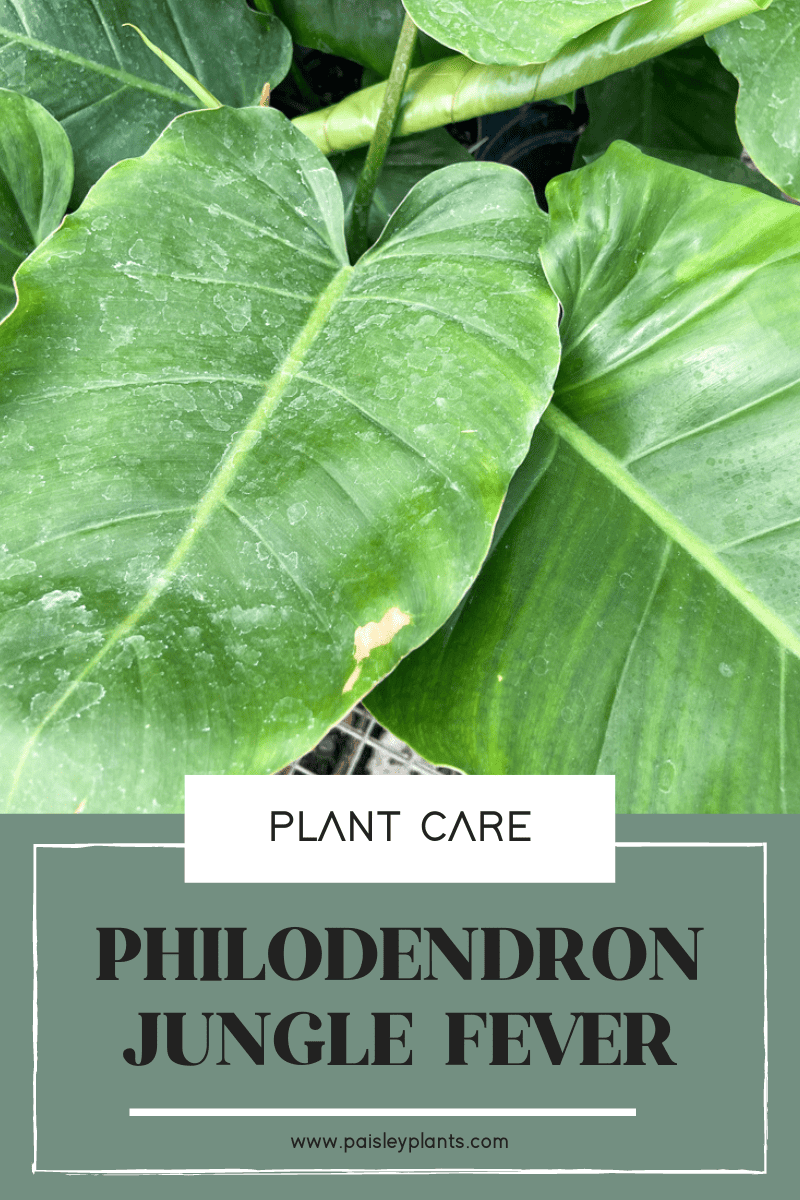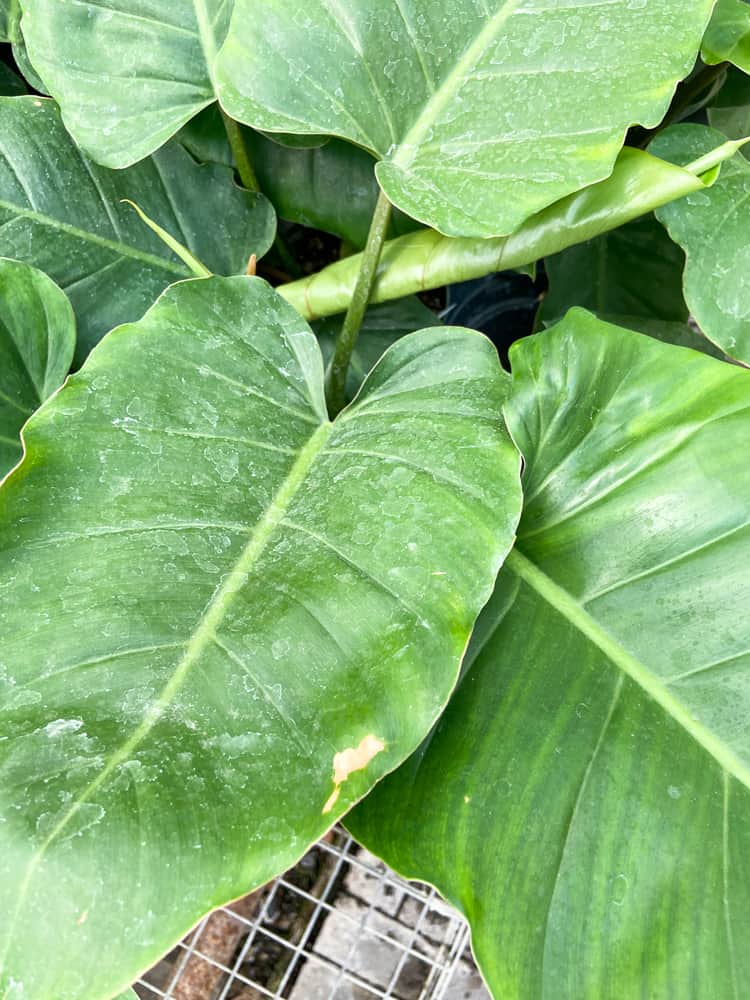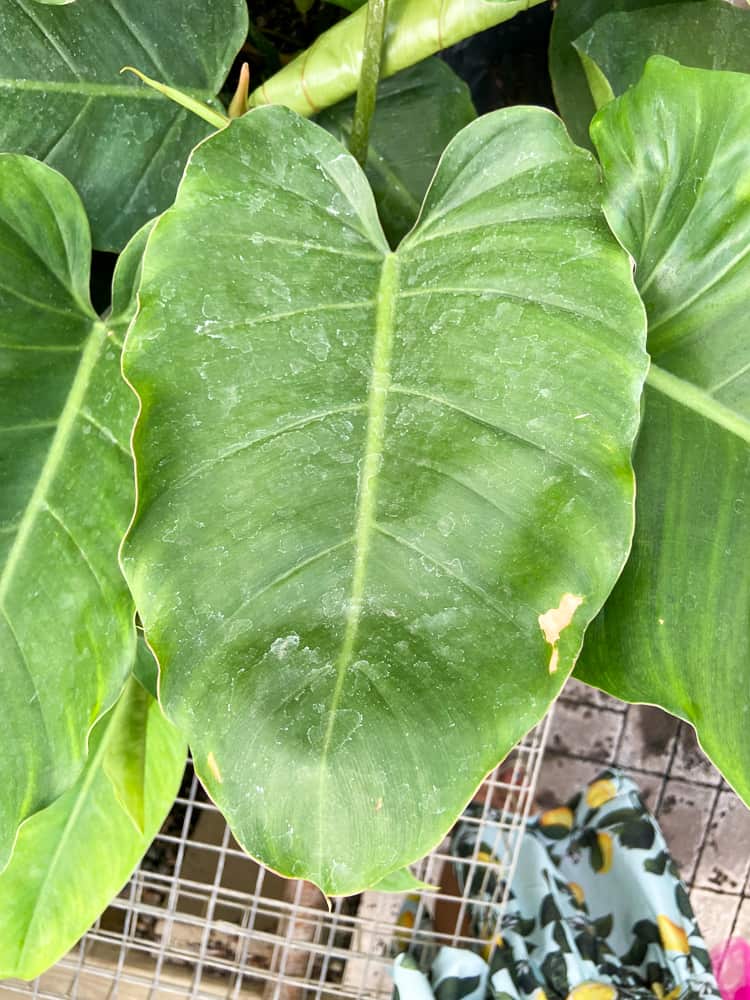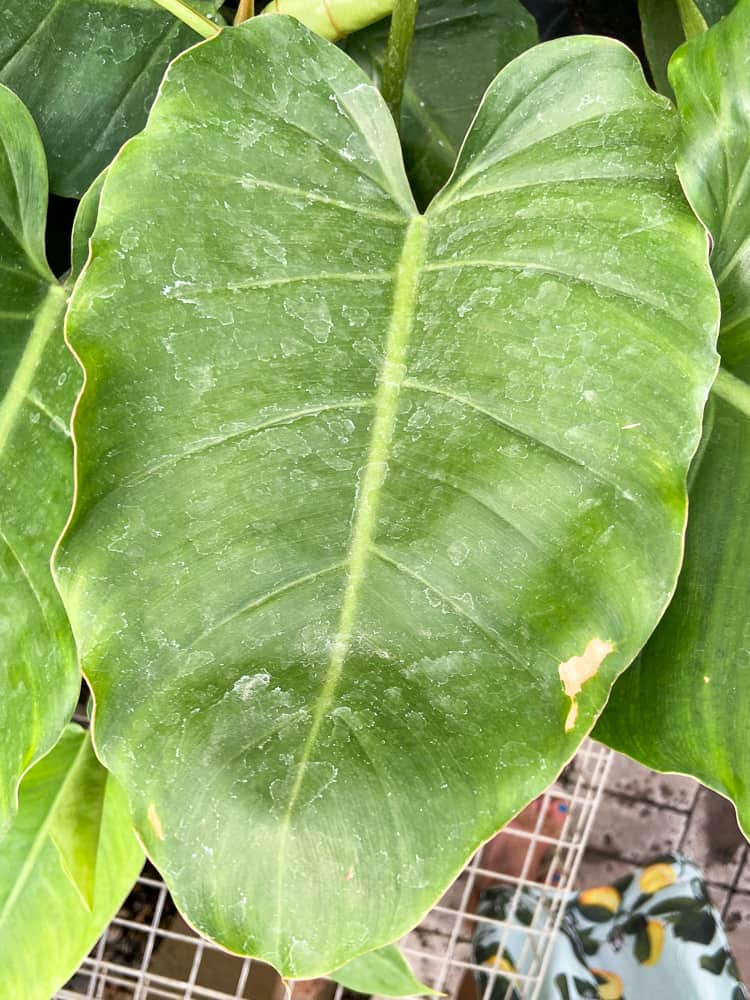If you need a new plant to add your plant collection or a plant lover looking for some more exotic plants, we have the perfect plant for you! Introducing the Philodendron Jungle Fever plant best know for it’s beautiful mottled pale green leaves.
Today we’re going to take a look at the Philodendron “Jungle Fever” plant. If you have never heard of this plant, then let me walk you through some helpful tips on how to care for one!
Table of Contents
Philodendron Jungle Fever Plants

This beautiful plant is a rare find. It is a hybrid plant that has very unusually variegated leaves which is why it’s often called Philodendron Jungle Fever Variegated. Each leaf is very different from each other and thus, is very unique in appearance, which makes it rare!
The heart-shaped leaves of this plant tend to have very blocky variegation of at least three to four shades of green and/or yellow. It is also known in some Asian countries as the Philodendron “Green Moss” variegata.
The word philodendron means “tree loving.” The leaves on the philodendron have aerial roots that will grip the bark on trees, so they tend to grow even taller when grown outdoors.
Toxicity
All parts of this plant are poisonous and can cause skin irritation. They are also not suitable for consumption, so be sure to keep them away from your pets and small children!
Care Tips for Philodendron Jungle Fever Plants

Water
The Jungle Fever likes to be consistently moist. You should keep a regular watering schedule and not overwater.
If the soil starts to feel dry, then you should water. Don’t let it stand in water for any length of time though. Be sure to give your philodendron plants sufficient drainage!
Light
When deciding where to place your tropical plants, be sure to choose a bright place in your home with bright indirect light. This could be in front of a large window or in a room that has consistent and bright light.
If you don’t have a place with sufficient light, you can use a grow light. Even in low light conditions, your plant will grow, but at a slower rate and the leaves will be smaller. Be sure you don’t place it in direct sunlight or the leaves may turn yellow and scorch!
Soil
You can use regular well-drained soil for this plant, but you may want to add some perlite or vermiculite to help with drainage. Any type of organic matter such as coco coir will also help with drainage.

Fertilizer
Because your plant will be getting energy from sunlight, you shouldn’t need to fertilize it. Fresh potting soil has all the nutrients your plant needs, so as long as you refresh it at least once a year, you probably won’t need to fertilize your Jungle Fever.
If you do decide to use a fertilizer, you can use a liquid fertilizer that’s applied during the growing season.
Temperature and Humidity
Your Jungle Fever will thrive in temperatures between 55 and 80 degrees F. If you live in a colder climate, you should be sure to bring your Jungle Fever indoors over the winter months. They won’t survive frost or freezing temperatures outdoors!
Unless your house is very dry, you won’t need to worry about additional humidity for your Jungle Fever plant. The average household humidity will be just fine for your plant! Just another reason why this makes such a great houseplant.
Pests and Diseases
Two of the most common pests that can affect your Jungle Fever are spider mites and mealybugs. If you happen to have this problem, it can be treated with either neem oil or an insecticidal soap.
Once you determine there is a problem, you should isolate your plant so it doesn’t affect any others. If the leaves turn yellow or have spots on them, this is most likely a sign of pests.
Root rot and leaf spot are the two most common diseases found with Jungle Fever plants. Root rot can be prevented with proper watering and not overwatering. Leaf spot is caused by a fungal infection and can be prevented by keeping the leaves dry and avoiding overcrowding.
Pruning and Repotting
Be sure to prune back any damaged or yellowed leaves. This can help your plant to look good and it will also help your plant to maintain its bushy form if you do this once or twice a year.
You should repot your Jungle Fever after it doubles in size or once a year, whichever comes first. Having fresh potting soil will give your plant all the nutrients it needs and you won’t have to fertilize it. Be sure to gradually increase the pot size.

Common Problems for your Philodendron Jungle Fever plant
Yellowing Leaves – This can be caused by overwatering, underwatering, too much direct sunlight or nutrient deficiencies. Take care to water it on a regular basis and provide enough indirect light.
Brown Tips – Brown leaf tips on your Jungle Fever Philodendron can be caused by dry air, underwatering, too much sunlight or too much direct sunlight. You may need to increase the humidity around your plant or place it on a pebble tray. Use a regular watering schedule and give it enough indirect light.
Root Rot – Overwatering and poor drainage will cause root rot. Be sure your pot has sufficient drainage and never allow your plant to sit in standing water.
Leggy Growth – This can be caused either by insufficient light conditions or lack of pruning. Providing enough light and regular pruning of your plant should prevent this from happening.
FAQs
They are the same hybrid, but the Snowdrift clearly exhibits different variegation. The variegation on the Snowdrift is more white like snow and yellow. The variegation can also be speckled or mottled on the leaves.
It is a slow climbing philodendron, but will maintain its bushy form by trimming it back once or twice per year. If you wish to have a climbing plant, you can use a moss pole to do so.
The only common name I could find for the Philodendron Jungle Fever was “tree friend.” It is known to be a very beautiful and also very rare plant and has a very special leaf pattern. Philodendrons are known to be tree climbing vines, so this name makes perfect sense!
In Conclusion
Even though these are more rare plants, you should be able to easily find one to have for your own houseplant collection. It will also be a pretty easy plant to care for if you follow a consistent watering schedule and give it good light conditions.
No matter how you cut it, the Philodendron Jungle Fever will definitely add some luxury and unmatched beauty and interest to your home or office setting!
